BIOS -
BIOS is an acronym that stands for Basic Input/Output System. It is meant to control your product at a very low level. As of right now there are three regularly used BIOS formats (there are actually more than that but there are three common ones). These are the AMI (American Megatrends Incorporated), Award, and Phoenix. The BIOS on the 990FXA-UD5 is the “old” style with no GUI. For many this is perfectly ok (me too). Gigabyte has always used the award layout to good effect. Their typical layout puts everything in close range for easy tweaking and adjustments. On the 990FXA-UD5 the layout differs quite a bit from the Intel based boards from Gigabyte that we tinkered with. In most of the Intel based boards (and the 890 boards we tested come to think of that) you had multiple pages under the M.I.T. (motherboard intelligent tweaker) page. These are nice in that they really concentrate everything you need into discrete pages with a nice status page. On the 990FXA-UD5 you do not get any of that. Instead you get a little over a page of settings (good ones though). 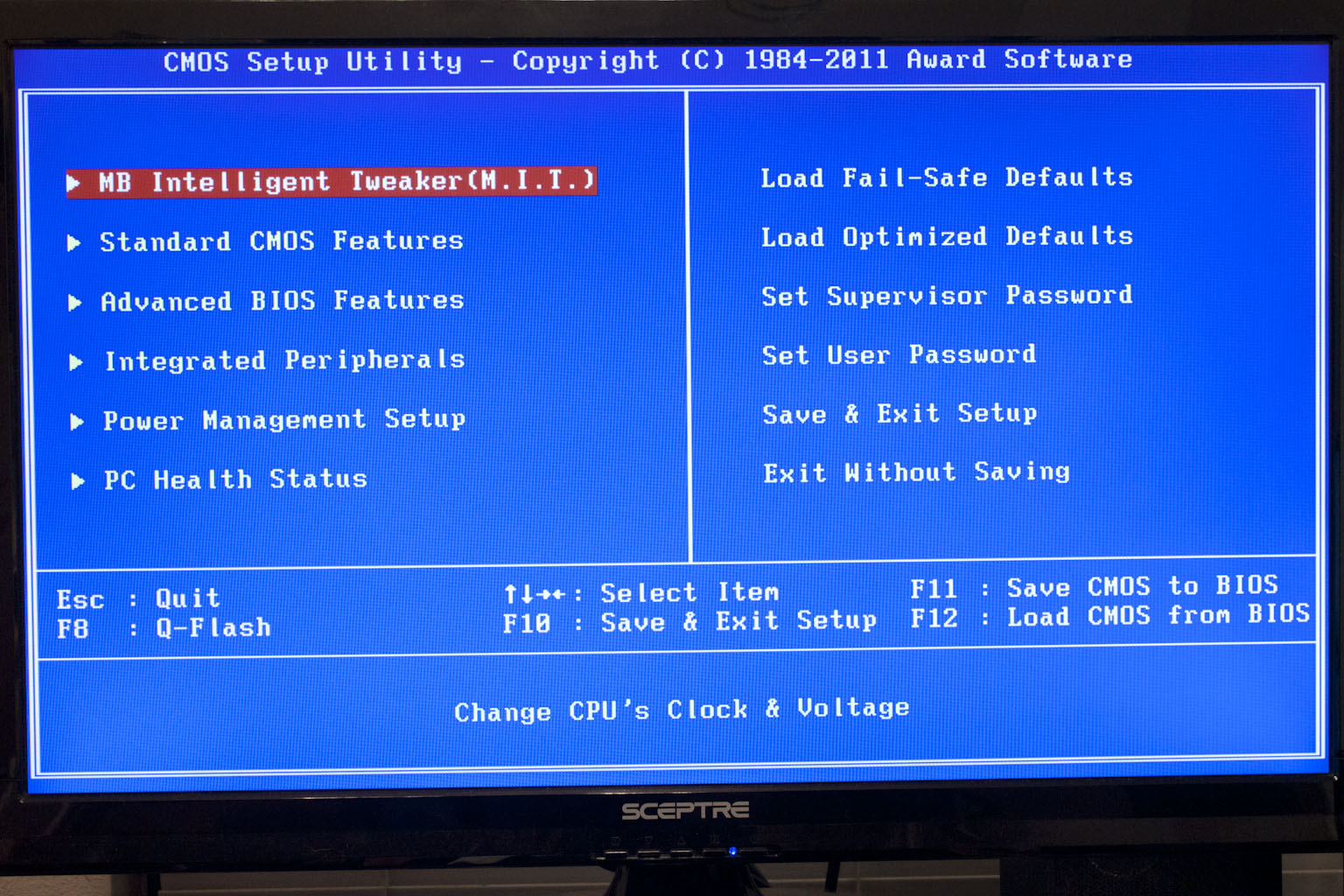
The rest of the BIOS is very typical and will be easily recognizable to anyone that has been tinkering around in a Gigabyte BIOS before. You have the normal settings for drives, CPU features (like AMD’s cool and quiet).
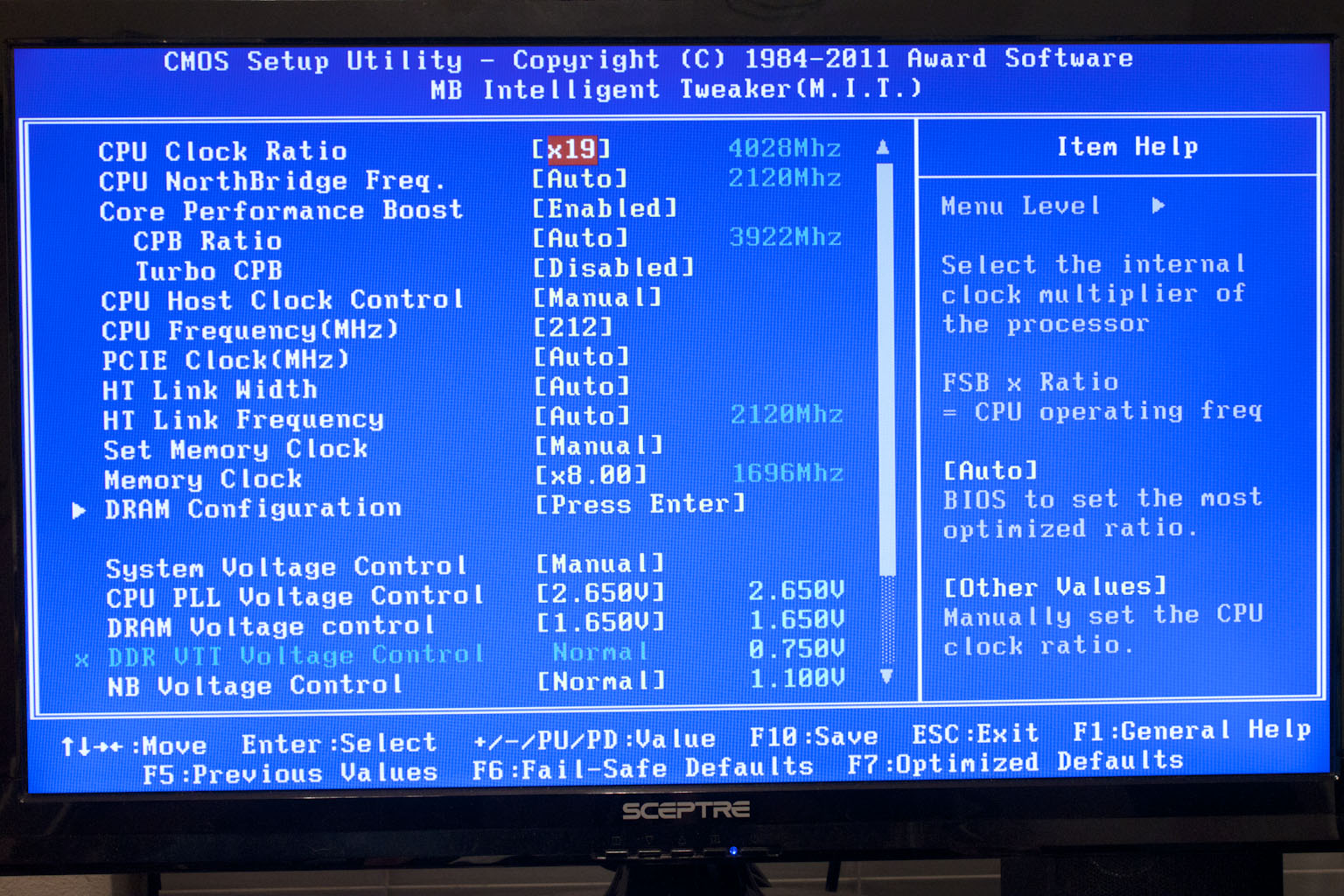 |
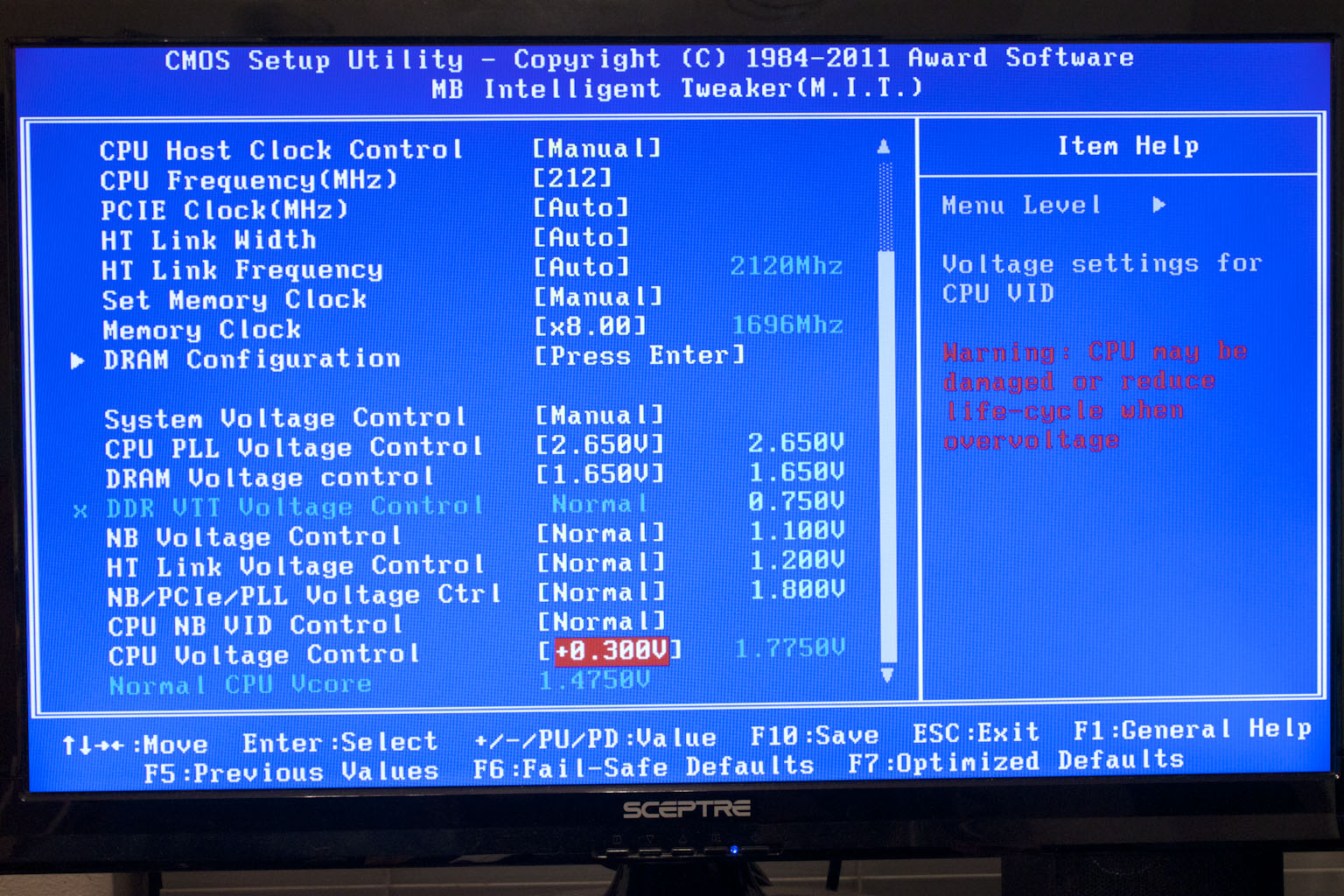 |
On the Integrated Peripherals page you can really get a good idea of all of the components that are packed into the 990FXA-UD5. Notice there are two distinct USB 3.0 entries. That is because there are two different control chips on the board.
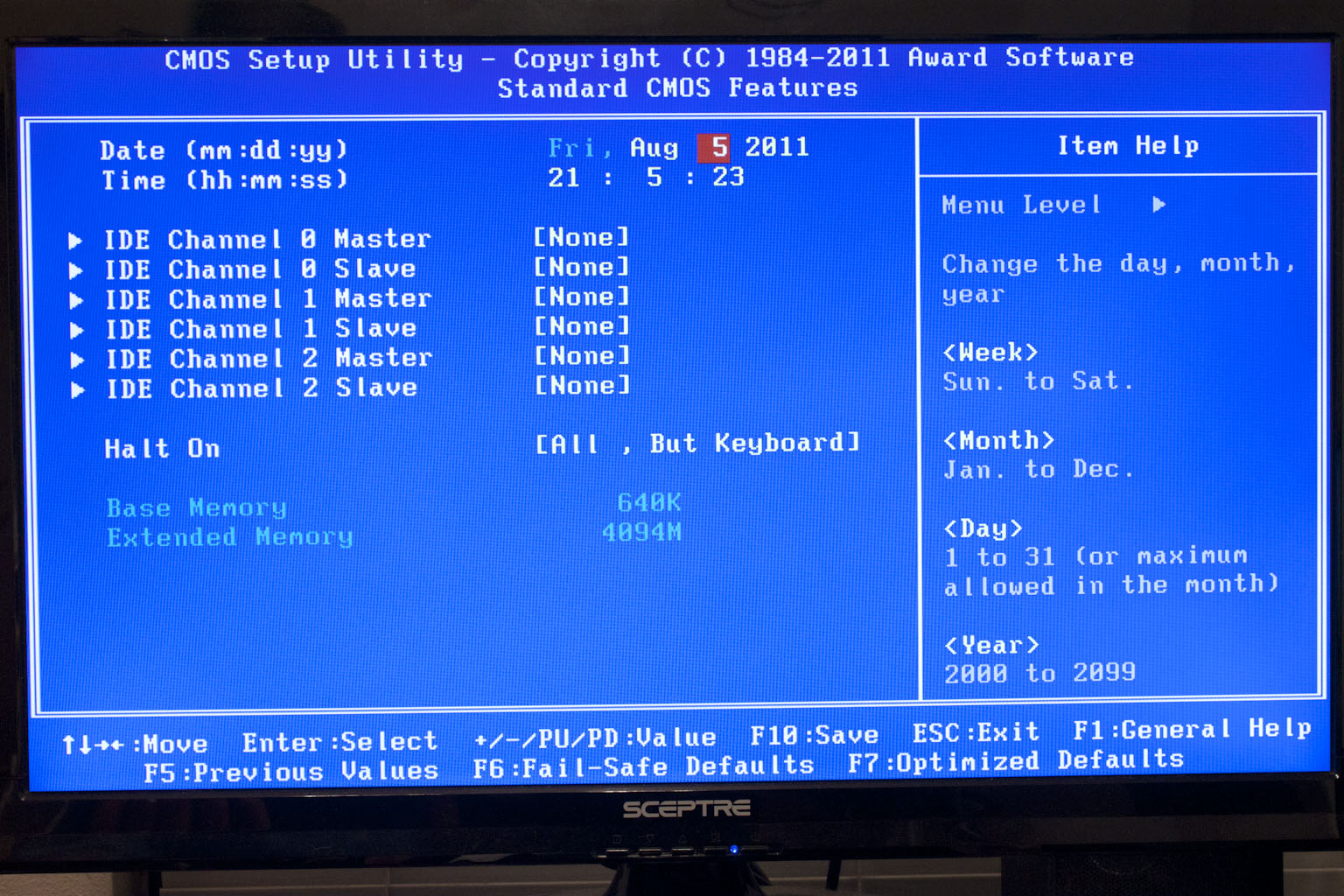 |
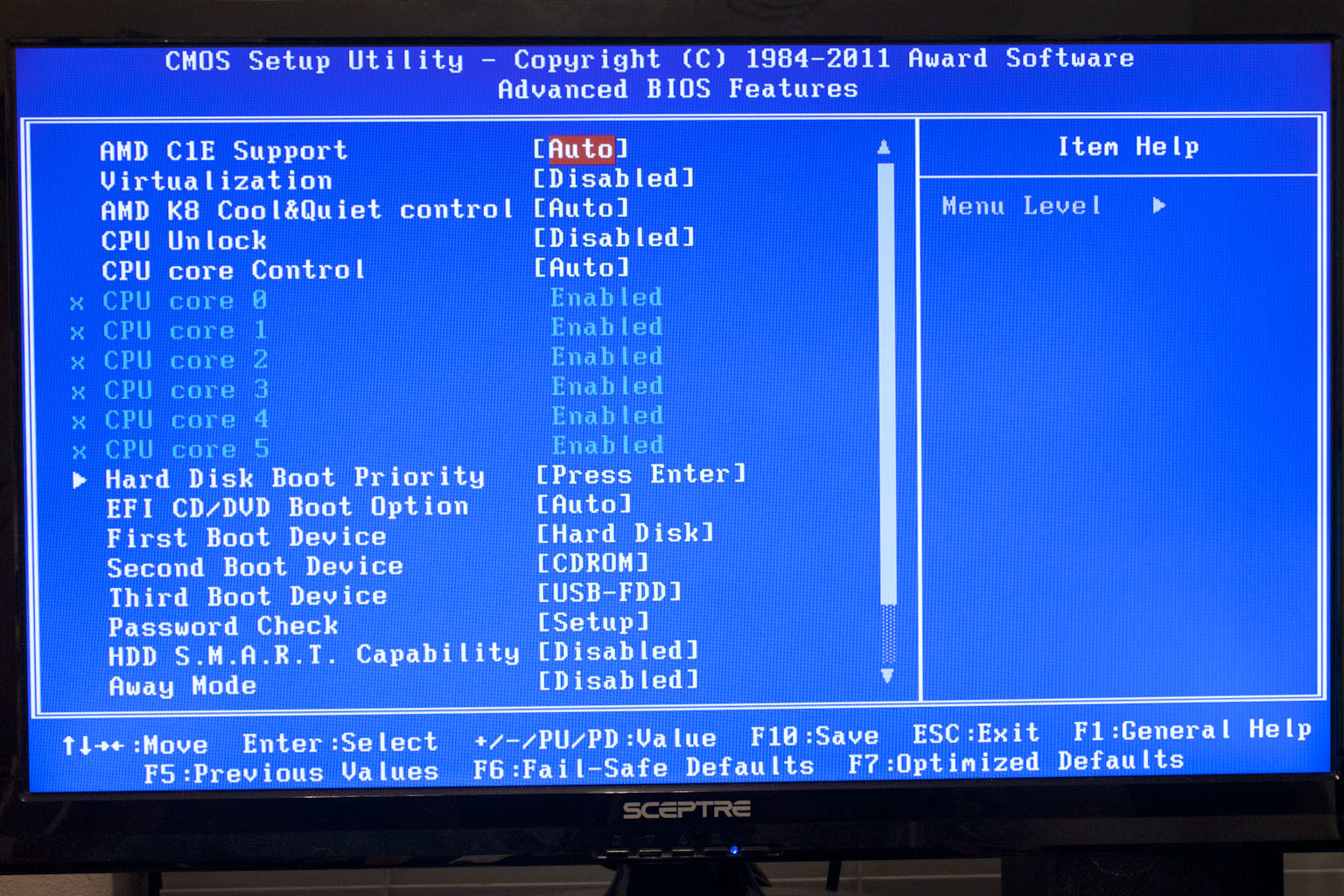 |
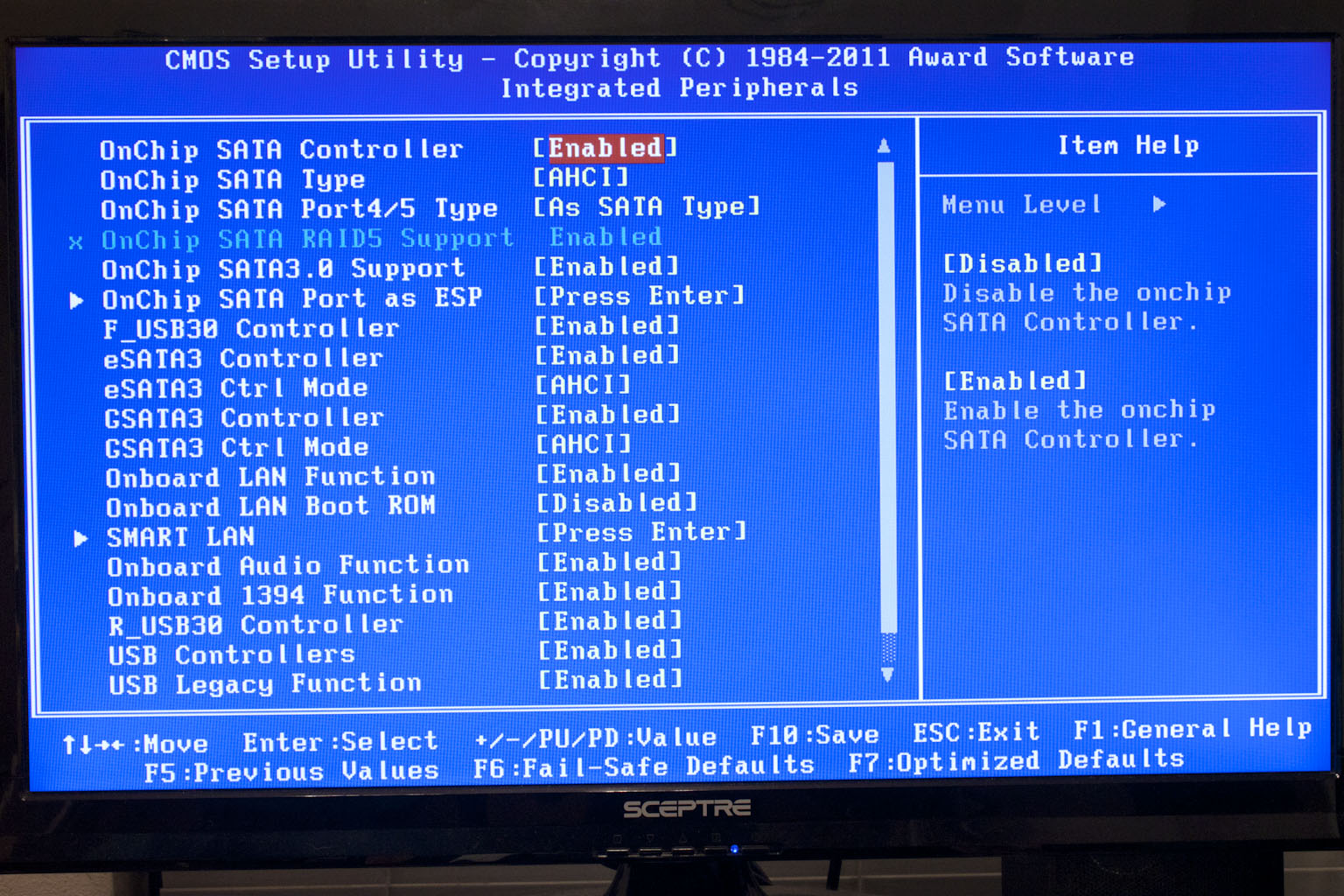 |
Overall the BIOS is clean, but simple. You do not have that much to wade through but what is there is well designed. Now we need to see if some of the underlying tuning has been done right.
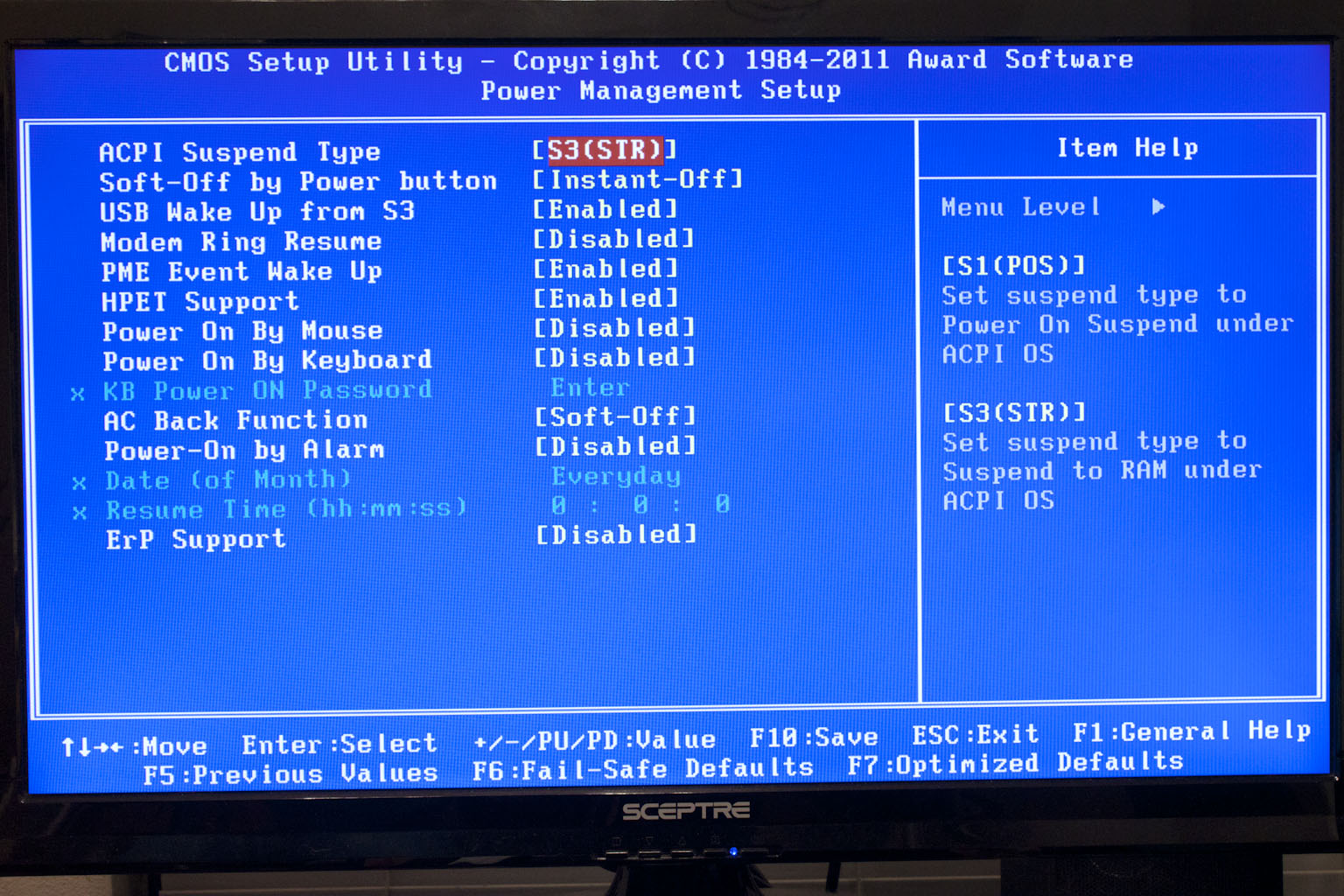 |
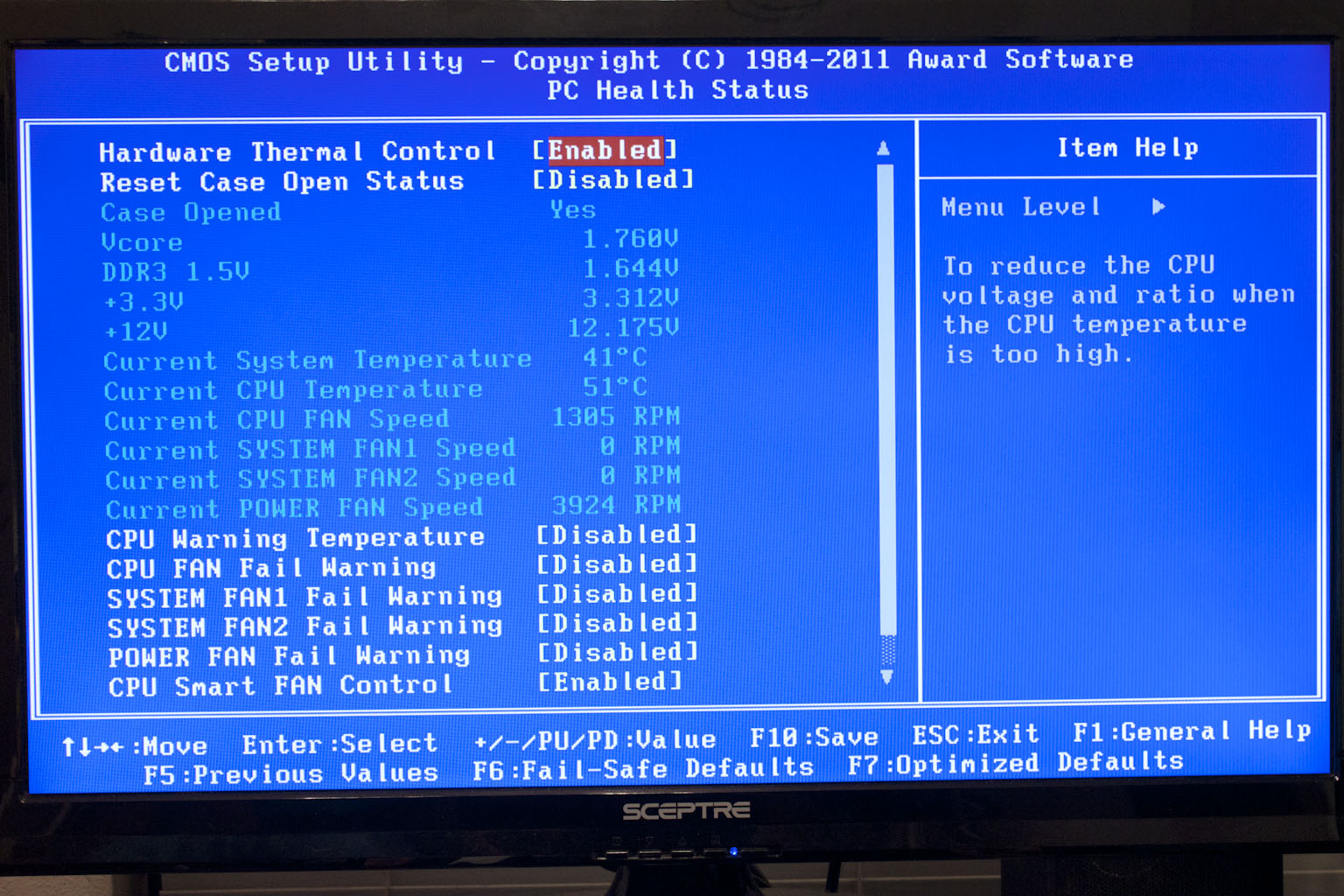 |
Overclocking -
I have never had much success with high overclocks on the newer AMD CPUs. My last overclock of any real note was an AM2 5000+ that I managed to break a world record on (that lasted 6 months). This was with a prototype phase change unit from OCZ, but all of that is ancient history. Lately I have been happy with 500MHz overclocks on AMD CPUs. With the 990FXA-UD5 I was only able to reach a max OC of 4.027GHz (19x212). Strangely enough I am still getting the rejected listing from HWBot whenever I overclock this particular CPU. It makes me wonder if there is something wrong with the CPU and that is part of why I am having the poor overclocks. Perhaps a call to AMD is in order. Still if this is a bad CPU we still managed to get an almost 900MHz overclock on this CPU and the 990FXA-UD5.
Of course overclocking is a picky subject. I can buy to identical CPUs from the store and they will not always perform the same way under stress. This is the same with motherboards, RAM and GPUs. So again it is important to keep in mind that our results represent a specific hardware configuration. Yours may be similar but will rarely be identical.
Overclocking Tools -
Gigabyte’s overclocking tool is the much talked about EasyTune 6. This piece of software is functional and works well, it is just a little awkward to use. The first two pages are dedicated to the status of the board and any overclock you may have going. To do this Gigabyte uses the same layout as the popular CPUz program.
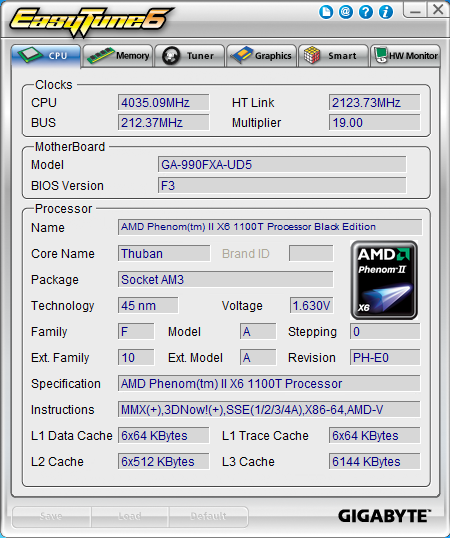 |
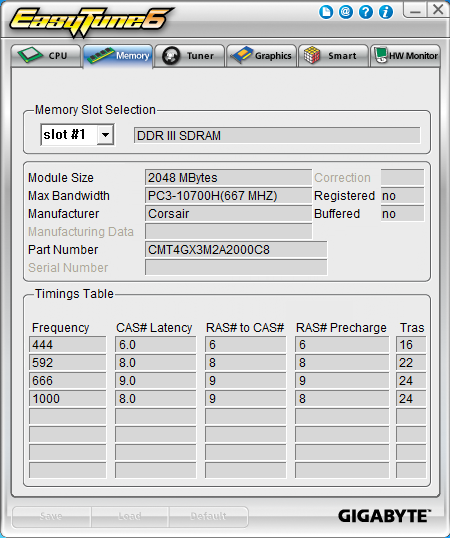 |
The third page is when things get interesting. Here we find the tuner pages. You start off looking at the easy settings (which include the easy boost button). These are a little on the light side, but if you are new to overclocking they can get you going. Once you change over to the Advanced settings you have access to a few more controls including a single voltage slider for the CPU (like I said the controls are light).
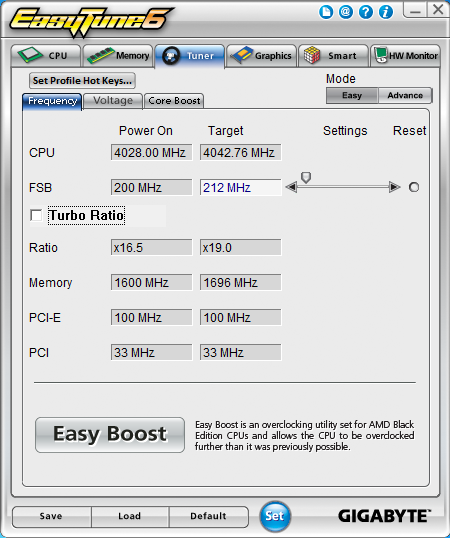 |
 |
 |
The rest of the application is turned over to a GPU overclocking utility, a smart fan tool and a graphical voltage and temp monitor.
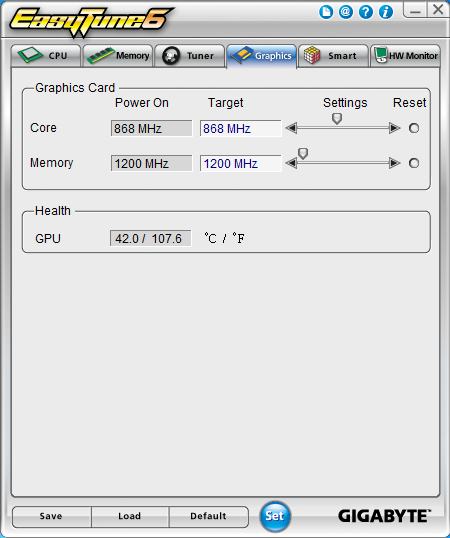 |
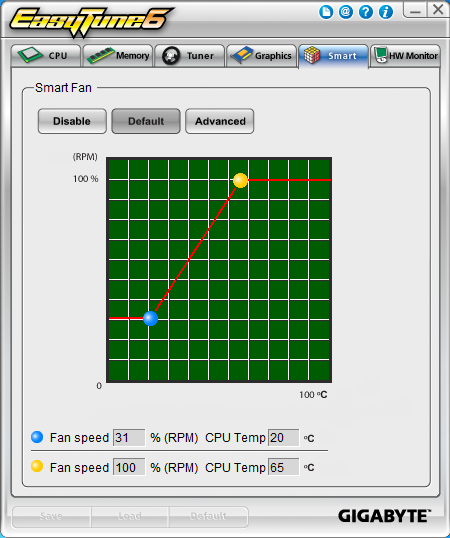 |
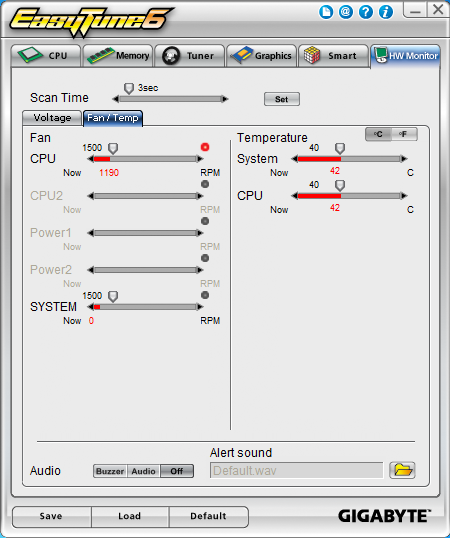 |
It is a nice tool, but let’s face it is need of an overhaul.
Another cool option for overclockers is the Cloud OC utility. This is an application that turns your system into a webserver. As simple password protected webserver. This webserver is designed to allow you to connect to your system and adjust your overclock. Unfortunately we could not get it to work on ours. We could get to the login screen but it would not let us go any further on our tablet.
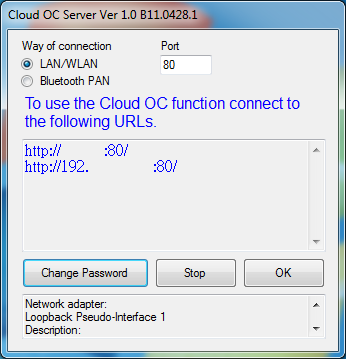

The Test System and Comments -
Our test system is built on an open bench. This has two effects on testing. First it allows us to see everything and also to setup and disassemble the test rigs quickly. Second it means that we cannot gauge the potential air flow found in a normal case. The air is pretty stagnant; some may say this is a great neutral testing method and it can be. However, it does mean that the temperature reading taken off of the components are not accurate to what an average consumer would see. This means that your thermal performance will vary from what we see here.
Setting up the 990FXA-UD5 was as easy as setting up any AMD motherboard. You pretty much just drop in the CPU you want, add RAM and GPU then power on the system. If you are dropping a Microsoft OS on your system then the Gigabyte Installer will get all of the drivers and utilities installed for you very quickly.
As the UD5 is not the top of the line board you get some of the more consumer based utilities when you run the installer. These include the Smart6 suite, the Easy Energy Saver, and a few others. It is a nice package to have on this board as it spans both markets. 
Performance testing overview -
Our testing is a little different than most. We combine both synthetic and real-world applications to simulate the types of performance common to the individual products. For motherboards this means that we run roughly six synthetic tests and two real-world. We will be expanding the real-world testing in the near future. But there is more to performance than just the raw numbers. As there are multiple components and sub-components on a motherboard there each item can have a distinct impact on the way the product will perform once you get it in your system. It is important to note not only the actual results but what they mean to you as a potential consumer. We will try to give this information to you. But we do not just cover the performance aspects that are measurable. We also talk about the components that might not have a direct benchmark. These are items like Audio Quality, ease of use and installation.
Section 1 Subsystems -
Memory -
Memory performance is very important on a motherboard, especially when you have a CPU with multiple cores and threads. If you have slow memory your cores and threads can become starved for data to execute. To test memory performance we run both Sisoft’s SANDRA and AIDA64. These two combine to not only give us accurate numbers but to validate each other. For testing at stock speeds the memory is hard set to 1333MHz while overclocking testing is done at the highest stable speed for the voltage of 1.65v this is due to the different memory dividers for each CPU. As such, the memory speeds will vary greatly. This means that the overclocked numbers are a little misleading and while they can show a trend are really only included to show if a board has a problem with memory performance at high clockspeeds.
The Gigabyte 990FXA-UD5 performs a little slower than some of the 890FX boards we have tested (and one 780FX). We were a tad surprised at this and can only suspect that it could be due to the tuning present in the BIOS for the AM3+ CPUs that are being released in a couple of months. 
ADIA64 shows us part of the reason for the slow memory performance. What we find is both the read and write speeds are slowed down. This is from the high latency times that we find on the AMD internal memory controller. We do hope that AMD has managed to fix this with the new Bulldozer CPUs they are going to drop on the world in September.
| ADIA64 Stock Memory Performance | AIDA64 Overclocked Memory Performance |
 |
 |
Drive performance -
Drive performance is also one of the major subsystems that goes to make up the performance of a motherboard. For our testing we use Sandra and AIDA64 again. We only test with single drives for each type of controller present on the motherboard (unless it is a professional product where we will use RIAD 5 and/or 10). We have also begun using a Seagate PS-110 USB 3 external HDD for our USB 3.0 performance. As a side note, we include the overclocked numbers here to make sure (again) that you are not going to see a major drop in performance due to minor instabilities at high clock speeds.
For drive performance the 990FX-UD5 falls right in the middle of our test group. At least it does for the SATA 2.0 testing. When it comes to USB 3.0 and SATA 3.0 we find that it is right at the same mark as the other boards we have tested.
AIDA64 again adds detail to the raw scores we get from SANDRA. What we find is that the controller on the 990FXA-UD5 slows down when reading data from the middle and end of the drive.
| AIDA64 Stock HDD Performance | AIDA64 Overclocked HDD Performance |
 |
 |
| AIDA64 Stock USB 3.0 Performance | AIDA64 Overclocked USB 3.0 Performance |
 |
 |
Power -
Power efficiency is another of those misnomers that we get caught up in. We hear about idle states and power gates. But what does that mean to you and I? On the surface having power management that reduces idle power sounds great and can be a benefit to someone that leaves their system on for long periods of time (and inactive) but how a system handles power under load and the delta between the two states is often more important than the idle power usage numbers. We use only P3 Kill A Watt instruments for measuring power. 
One of the things that AMD has always made a claim of is that they are more energy efficient than the competition. This was the case for many of their CPUs for a long time. They were able to pull less power and get more from them at the same time. However, we have seen recently that AMD is having to push quite a bit of power into their chipsets and CPUs to get the levels of performance that they do. Here we see the Gigabyte 990FXA-UD5 at the bottom of the list pulling more power at both idle and load than the others in our test group. It is this that probably stopped our 1100T from getting a higher clock than it did.
Cooling (Board Level) -
Board level cooling is an important factor in product performance and longevity. Components like the chipset, VRM modules and even capacitors need to be kept relatively cool to prevent failure. As these parts are made of silicon, they have a thermal breakdown threshold; or melting point. At that temperature the actual transistors built into chip will begin to deform and break down. Granted, the threshold is often very high, but you still need to make sure that components stay away from this level of heat for longer product life. 
The cooling on the 990FXA-UD5 seems to have a difficult time dissipating the heat that is generated by the power system. Although we do see decent temperatures at idle, but when we run the board flat out we see the cooling get a little saturated. Now it is important to remember that we are running this on an open test bench without the same forced airflow you would have in a case. However, even with this fact we are still seeing temps that are much higher than we would like.
Audio -
Audio is highly subjective. What we find pleasing may sound “off” to you. That is always going to the problem with testing audio; results will vary too widely depending on the tastes of the listener. However, there are ways of measuring the audio output with an objective ear. There is also the issue of audio causing performance issues in gaming and video playback. The reason this is a potential source of concern is that all onboard audio CODECs (Compression/Decompression) are CPU controlled. This means that while the audio chip controls the audio levels and effects of the audio the actual work is done on the CPU. Usually this will not be a problem with today’s powerful CPUs. Even the lower and consumer level products can handle high-end audio these days. But again there is the chance that a bad design or software will hinder your system and performance. On the other side the limits of board space, cost, etc will also prevent the level of audio quality you can get from an add-in board. We test all audio parts with three media types, Movie (DVD), MP3 Music, and Gaming. These are pushed to our Tec On model 55 Tube Amp to see if we can detect any signal issues in the reproduction.
The audio on the 990FXA-UD5 is very nice (and I am an audio snob truth be told). It is more than sufficient to handle the audio from games, movies (even Blu-ray). This is not unexpected as the audio CODEC has a signal to noise ration of 108db. This means that for every decibel of noise (electronic or other) you get 108 of your audio stream. For an onboard CODEC that is pretty good.
Networking -
This one is something that is a requirement anymore. If you have a computer, the chances are good (like 99%) that you are also connected to high-speed internet. With this you need a good and solid LAN chip to make sure that your data flows properly out and back.
The networking on the 990FXA is about what you would expect of a Gigabit Ethernet chip. It will get your data back and forth to the internet and around any home network you have. It is not going to win you any speed records, but it will get the job done.
Section II - Performance Tests, Synthetics -
In this section of testing we cover the synthetics. These are tests that run a scripted sequence of internal APIs or that use another installed application to perform a series of scripted events. They are great in that they can provide reproducible results across various platforms. On the down side, synthetic tests can be fooled with driver tweaks and optimizations. In some cases it is necessary to rename the .exe file to something generic to discover if this is the case. In any event when this is needed (when a test shows a drastic difference in performance over the renamed exe) we will note this and show both results for comparison.
PCMark7 -
PCMark7 is the latest general performance test from FutureMark. As each generation of this benchmark has evolved and developed we have watched them add more and more realistic tests to this suite. With this generation we find more media tests, (audio and video transcoding) moving of large files, multiple web page rendering, and much more (the even added DX10 gaming). We use the Overall Performance and Common Usage suites in our testing.
Unfortunately the 990FXA-UD5 with our 1100T did not do well with the tests in the PCMark7 suite. We were hoping for more, but it did not transpire. We would lay even money on the IMC inside the 1100T as the culprit here. 
3DMark 11 -
3DMark 11 is the other Futuremark test that we run on our motherboards. This test simulates the typical tasks that a GPU (and system) would have to perform to provide you with a good gaming experience. It is based on the DX9, DX10 and DX11 engines but can only be installed on Windows Vista or later. The suite of tests covers DX9, DX10, and of course DX11 rendering; it also covers AI computations and physics. That’s right I said Physics the latest version of 3DMark uses a Havok physics engine. This removes the advantage that nVidia had with 3DMark Vantage. 
For 3DMark11 the 990FXA-UD5 does well in terms of overall system score, but when it comes to the CPU bsed Physics score it struggles to get through the test, again we would have to say that this is a memory issue rather than a raw power problem.
HyperPi 0.99b -
HyperPi is a front end application that allows you to easily run multiple instances of the SuperPi application. SuperPi, for those that are not familiar with it, is an application that measures the time it takes to calculate the number Pi out to as many as 32 million places. This calculation is then checked and run multiple times (up to 24 for a 32M run). This test stresses the CPU, Memory and HDD as data is handed off between the three. If there is a weak link, HyperPi will show it. For our testing we run the 32M test on as many cores (and threads) as the CPU has available. The slowest CPU time is then recorded. 
Again we find another benchmark that shows slightly slower performance than the last generation. It is disappointing, but we do feel that some of this will change when we see Bulldozer hit, but we also feel that this can be corrected with some more tuning of the BIOS.
Cinebench R11.5 -
Cinebench R11.5 is the 11th release of Maxon’s rendering test. This test is based off of the Cinema 4D engine, which is one of the industry standard tools for digital animation. It is a powerful product with many different modules that can be “plugged” into it to increase its effectiveness. With Cinebench you get to see how your computer would do using this application. There are two tests; one tests the CPU’s ability to render an image across multiple cores or threads. The other tests your systems ability to handle OpenGL based rendering. 
Ok, now this is a little more like it. Here in the multi-threaded rendering test from Maxon we finally see the 990FXA-UD5 pull ahead of the other AMD boards. This means that there certainly is hope for the 990FX chipset. Again, our guess is that once we see Bulldozer hit the streets we will see some of the performance potential of the 990FXA show up.

Section III - Performance Tests, Real-World -
Here we have two tests that are designed to put the performance of the motherboard and its subsystems to the test. Both require good CPU, Memory, HDD and even to a lesser extent audio and network performance. The two tests we chose were Lightwave 3D 9.6 and AutoGK 2.55. We will be adding at least one more real-world test to this battery in the near future, but for now these two cover quite a bit.
Lightwave 3D 9.6 x64 -
Lightwave is another industry standard application for 3D animation and rendering. It has a large tool base and the rendering engine is highly threaded (when using the right render model). This application is also capable of expanding to 4k resolutions as well as ray tracing for rending the light sources. For our testing we use frame 470 of the Pinball scene found in the LW 9 Content folder. This uses the newer perspective camera that is better suited to a multi-CPU/Core environment. This camera style also uses ray tracing and a much improved anti-aliasing method. Settings are shown below in the attached screen shot. Of course these are single frame renders and they are not a complete picture; for that you have to take into account the number of frames an average project would have. In a typical 30 second commercial you will have around 840 to 960 frames (at 28 – 32 FPS) this means that you have to multiply the time of a single frame by that number just to get a vague idea of how long that 30 seconds would take. This is because each frame will have a different render time based on complexity.
Just like we saw with Cinebench R11.5 we see the Gigabyte 990FXA-UD5 outperforming the other AMD based boards. True it is not as powerful the Intel boards in our group here, but it still does well for the AMD product. The estimated project times only illustrate how important every second is
The estimated project times only illustrate how important every second is


AutoGK 2.55 Transcoding -
AutoGK is a transcoding software that is really multiple parts combined to make an easy to use whole. It combines, items like FDD Show, Xvid encoder, Virtual Dub and others for use in converting one media format to another (usually Xvid AVI). It will not transcode copy protected DVDs or Bluray discs yet (you still need a decrypter for that). But it does an excellent job on everything else. For our testing we use a 2 hour movie that has been placed onto a standard definition DVD for playback; we then transcode this DVD to a 100% quality AVI with the original audio intact. This puts a strain on the CPU, Memory, HDD and the attached DVD ROM drive.
Ouch, the Gigabyte 990FXA-UD5 did not do well with our AutoGK test. Once again, as with many other performance issues we have noted on the 990FXA we are leaning towards this being a memory performance issue. After all we are talking about a roughly 6 minute difference in time here. We do hope that Gigabyte will take a look at this and do a little more tuning on the 990FXA-UD5 to bring the memory performance up some.

Section IV Performance – Gaming
Gaming as a test of motherboard performance is sort of a joke these days. The big player in the gaming arena is the GPU. Everyone but a few hardcore PR teams know this. However, it is important to run at least a few (one from each current DX version) to see if there are any issues with the combination of components on a motherboard. These are items like Audio lag, memory lag and of course problems with the PCIe lanes and signal traces. If there are issues in design, drivers or BIOS then you can have odd gaming performance. So without much more preamble let’s dive into the three games we currently use; Call of Duty Modern Warfare 2 for DX9 FarCry 2 for DX10 and Battlefield Bad Company 2 for DX11.
Call of Duty Modern Warfare 2 DX9 -
This is an excellent but short game that put you right into the action from the beginning and does not let up the pressure until the very end. The graphics are a little better; most notably the night and thermal imaging have been improved. The AI is still the typical COD “bar fight” style AI, with maybe a tad more finesse. All in all it is not a bad game to play and a decent one to use for testing. Our testing run starts at the bridge and ends after you clear the school in the first level of the game. Settings are shown below as are the performance numbers.
 |
 |

The 990FXA-UD5 can hold its own under our DX9 testing (and with the hardware we have in the board). It is not the fastest, but we are still seeing minimum frame rates of over 80. This means that you will still have a good gaming experience with it. 
FarCry2 DX10 -
Although not one of my favorite games this tedious game does have some good graphics. The large sandbox style of the game lends to mission based play. The only problem is that the AI is rather low grade. Still the more CPU power the more the bad guys try to do. Over all the game was a little bit of a disappointment to play, but still not a bad DX10 representation. Our testing run starts right after you get your first mission to clean out the safe-house and ends after the hostage rescue. Settings and performance numbers are shown below.

The 990FXA-UD5 was a little disappointing with FarCry2. It only managed to hit 37FPS minimum. Granted this is over our 32FPS mark for full fluid gaming, but we are also looking at other AMD boards getting 40 and 43FPS and these are a generation or more behind this product.
Battlefield Bad Company2 DX11 –
I have liked many of the Battlefield games. They usually tend to be fast paced and fun. With Battlefield Bad Company 2 you do get some of that, but there is something about the graphics and the movement that just does not sit right. The AI is a less sophisticated form of the bar fight AI, but it gets the job done. Still, the game is good for testing as it can put a strain on the components of the board. Out testing run is the entire first level, from beginning to end. Settings are shown below along with the raw numbers.

In Bad Company 2 the 990FXA-UD5 redeems itself somewhat. Here we find it in the middle of the pack on a DX11 game that is fairly recent and also can be hard on a system. 
Gaming wrap-up -
Gaming on the Gigabyte 990FXA-UD5 was sort of hit and miss. We saw decent performance on our DX9 game (although near the bottom of the list), relatively poor performance on the DX10 test and fairly solid performance for DX11. I think that AMD has some drivers to work on in addition to Gigabyte needing to tweak the BIOS a little to deal with what appears to be memory issues. On the other had the audio performance (as we mentioned earlier) was very solid. We had no audio anomalies while the sound was full and pretty balanced for an onboard CODEC.
Value -
Value is another very subjective topic. What is expensive to some might be a deal to others. You can look at this topic in multiple ways. One is raw price and the other is what you get for the money. Each is accurate and both are correct ways to look at price/value. We tend to look at features, performance and real-property when we discuss value. However, we also take into account the raw cash cost of the item. The Gigabyte 990FXA-UD5 can be found on the Internet for around $190. This makes it one of the least expensive boards in our test group. When you top that with an AMD Phenom II X6 1100T black edition at $195 you can get a pretty decent system for not a lot of money. On the opposite side, the performance is also not going to be as high as some other offerings out there. We have to be honest here. The Gigabyte 990FXA-UD5 might not be worth it as it performs today. We will revisit this board when Bulldozer hits and also with the next major BIOS and driver Update. The reason for this is because we are fairly certain that our performance numbers will increase as some of the issues are ironed out for this new product.
Conclusion -
The Gigabyte 990FXA-UD5’s performance was all over the place. In some applications we saw what we hoped to see going in; an improvement in performance over the last generation. This was not the case in every application. We were more than a little shocked to find that the 890 and even the 770 Chipsets appeared to perform better in many of our tests. However, what we do strongly feel that much of this can be fixed with new drivers and also a few tweaks to the BIOS. We are also fairly certain that once we get our hands on a Bulldozer CPU we will see some of the performance potential of this product come to the surface. For now I would keep your eye on this board as we know that Gigabyte can put out a solid product, they just may need some time to tune this one in properly.
Discuss this in our Forum




